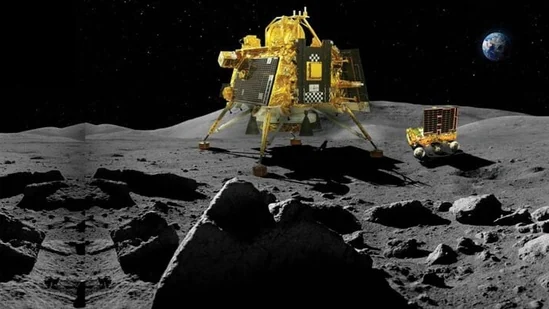Chandrayaan 3 displaced 2.06 tonnes of lunar soil : ISRO

Chandrayaan 3 displaced 2.06 tonnes of lunar soil : ISRO
By: Pune Pulse
October 27, 2023
Pune: The Indian Space Research Organisation (ISRO) announced on Friday that the lander Vikram, during its landing on the Moon’s surface, displaced around 2.06 tonnes of lunar regolith, which includes rocks and soil.
On August 23, Chandrayaan-3 achieved a significant milestone by successfully landing on the moon. The lander module, named Vikram, along with the rover, Pragyan, touched down at the Shiva Shakti Point located in the South Polar Region of the Moon. During its descent, the Chandrayaan-3 Lander Module created a remarkable ‘ejecta halo’ of lunar material.
This phenomenon was captured and analyzed by scientists from the National Remote Sensing Centre (NRSC), a division of ISRO.
Based on their research, it was determined that approximately 2.06 tonnes of lunar regolith, or surface material, were expelled and displaced across an area measuring 108.4 square meters surrounding the landing site. The Chandrayaan-3 mission serves as a continuation of the Chandrayaan-2 mission and aims to showcase the complete capability of safe landing and roving on the lunar surface.
The high-resolution imagery from the Orbiter High-Resolution Camera (OHRC) of the Chandrayaan-2 orbiter was compared by scientists before and after the landing event. The images were taken hours apart and revealed an irregular bright patch surrounding the lander, known as the ‘ejecta halo’. The mission’s objectives included a safe and soft landing on the lunar surface, demonstrating the rover’s mobility, and conducting scientific experiments. India’s successful landing of Chandrayaan-3 near the moon’s south pole marked a historic achievement, with Prime Minister Narendra Modi hailing it as a victory for humanity.
The Journal of the Indian Society of Remote Sensing published a detailed analysis of the ‘ejecta halo’ phenomenon, titled “Characterisation of Ejecta Halo on the Lunar Surface Around Chandrayaan-3 Vikram Lander Using OHRC Imagery”, providing valuable insights into the impact of lunar landings on the moon’s surface.
An estimated aerial extent of 108.4 m2 covered by lunar regolith ejecta due to the landing sequence of the Vikram lander is approximated from the mapped and classified uncorrelated ‘ejecta halo’ pixels. Additionally, empirical relations suggest that around 2.06 tonnes of lunar regolith were ejected during the landing event. It is noteworthy that ISRO had to wait for the lunar soil kicked off by the thrusters to settle down before deploying the Pragyan rover on the Moon’s surface.







